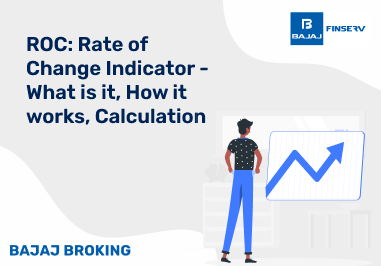Introductory Description:
Understanding the expense ratio is vital for mutual fund and ETF investors. It represents the costs associated with managing a fund and directly impacts your returns. Choosing funds with lower ratios helps investors optimise their investment performance.
Key Features:
Lower costs
Transparent fees
Higher returns
Cost-efficient investing
Expense Ratios: A Comprehensive Guide for Mutual Fund and ETF Investors
Understanding the expense ratio is essential for mutual fund and exchange traded funds (ETF) investors, as it directly affects investment returns. The expense ratio meaning refers to the percentage of a fund's assets used to cover operational costs like management fees, administrative expenses and other charges. Knowing what is expense ratio helps investors choose funds that align with their financial goals. Lower ratios generally lead to higher returns, making them an important factor to consider when comparing investment options.
What is the Expense Ratio?
The expense ratio is a key factor that investors need to understand when investing in mutual funds or ETFs. It represents the total percentage of a fund's assets used to cover operational and administrative costs. This includes management fees, advertising expenses and other charges incurred by the fund. Understanding what is expense ratio is crucial because it directly impacts an investor's returns. A lower expense ratio means fewer fees are taken from the fund's assets, leaving more money for investors. On the other hand, a higher expense ratio can significantly reduce the net returns on your investment. The expense ratio meaning can vary depending on the size of the fund, with smaller funds often having higher ratios due to the fixed costs of management. Bajaj Broking offers a range of mutual funds with transparent expense ratios, enabling investors to make informed decisions based on costs and potential returns. Therefore, when selecting a fund, it is important to consider the expense ratio as it can have a long-term impact on your investment performance.
How Expense Ratios Work?
Understanding how expense ratios work is crucial for making informed investment choices. The expense ratio is calculated by dividing the total operational expenses of a fund by the average value of its assets under management. These operational expenses cover various costs, including the fund manager’s fees, administrative costs and marketing expenses. Essentially, the expense ratio meaning reflects how much an investor must pay annually to keep their money in the fund. For instance, if a fund has an expense ratio of 1% and you’ve invested £1,000, you will pay £10 annually in fees. While these fees are not paid out-of-pocket, they are deducted from the fund's total assets, impacting the returns. Funds with lower ratios are generally more attractive to long-term investors because they preserve a larger portion of the returns. Bajaj Broking provides detailed insights into the expense ratios of their funds, helping investors choose schemes that align with their financial goals. Being aware of how these ratios work can significantly influence investment decisions.
What’s a Good Expense Ratio?
A ‘good’ expense ratio is typically one that allows investors to keep more of their returns while covering the operational costs of the fund. In general, lower expense ratios are considered better because they reduce the impact on your net returns. For example, for an actively managed mutual fund, a ratio between 0.5% and 1% is considered reasonable, while for passively managed funds like index funds, a ratio below 0.5% is often seen as more favourable. Knowing what is expense ratio and understanding expense ratio meaning becomes even more critical for long-term investors, as higher ratios can significantly reduce compounded returns over time. Investors should compare the expense ratios of similar funds to ensure they are getting good value. At Bajaj Broking, mutual funds with competitive expense ratios are offered, allowing investors to choose funds that balance cost with potential returns. While the expense ratio is important, it should be considered alongside other factors such as fund performance, management quality and investment goals.
What are the Components of Expense Ratio?
The expense ratio is composed of several different costs that together cover the operational and administrative expenses of running a mutual fund or ETF. The largest component is typically the management fee, which compensates the fund manager for their expertise in making investment decisions on behalf of investors. In addition to the management fee, the expense ratio meaning also includes administrative costs such as maintaining investor records, providing customer support and distributing fund literature. Marketing and distribution expenses, also known as 12b-1 fees in some markets, are another component. These fees are used to cover the costs of promoting the fund. Other expenses may include legal and accounting fees, as well as custodial fees for safeguarding the fund’s assets. By understanding these components, investors can better evaluate whether the overall ratio is reasonable for the services provided. Bajaj Broking ensures transparency by providing detailed breakdowns of the expense ratios associated with their mutual funds, helping investors make more informed choices.
How Do Expense Ratios Affect Returns?
The expense ratio has a direct impact on the returns that investors receive from a mutual fund or ETF. Since the ratio represents the percentage of a fund's assets used to cover operational expenses, these fees are deducted from the fund's total returns before they are distributed to investors. As a result, a higher expense ratio means that more money is taken out of the fund's assets, leaving less for the investor. For instance, if a fund generates a 5% return but has an expense ratio of 1%, the net return for the investor would be 4%. Over time, this can significantly reduce the compounding effect of returns, especially in long-term investments. On the other hand, funds with lower expense ratios allow investors to keep a larger share of the returns. Bajaj Broking offers funds with competitive ratios, ensuring that investors are not unduly burdened by high fees and can optimise their potential gains.
How is an Expense Ratio Calculated?
The calculation of the expense ratio is straightforward but crucial for investors to understand. It is determined by dividing the total operational expenses of a fund by the average value of its assets under management. The formula is as follows:
Expense Ratio = Total Fund Expenses / Total Fund Assets.
The total fund expenses include management fees, administrative costs, marketing expenses and other operational fees required to run the fund. By dividing these costs by the total fund assets, the expense ratio provides a clear picture of how much of an investor’s money is being used to cover these expenses. For example, if a fund has £10 million in assets and incurs £100,000 in operational expenses, the expense ratio would be 1%. This percentage is automatically deducted from the fund’s assets, meaning investors do not have to pay it separately, but it affects their overall returns. Bajaj Broking clearly outlines the expense ratios for their funds, enabling investors to make well-informed decisions based on costs and potential returns.
How to Find Funds with Low Expense Ratios?
Finding funds with a low expense ratio is crucial for optimising returns. Here are ways to identify them:
Choose ETFs: ETFs often have lower expense ratios than mutual funds.
Look for Index Funds: Index mutual funds tend to have lower expenses as they track specific market indices.
Use Online Screeners: Many trading platforms, like Bajaj Broking, allow you to filter funds by the expense ratio.
Research Fund Literature: Fund providers disclose their expense ratio meaning in their documentation.
Compare Similar Funds: Always compare funds within the same category to find the best ratio.
Review Fund's Historical Performance: Evaluate how consistently a fund has performed relative to its costs.
Check Fund Size: Larger funds often have lower expense ratios because operational costs are spread across a larger asset base.
By focusing on low-cost options and understanding what is expense ratio, investors can improve overall returns, especially over the long term. Paying close attention to fees ensures more of your money stays invested and working for you.
Additional Read: Beginner's Guide to Investing in ETFs in India
Expense Ratio Vs. Management Fees
When evaluating mutual funds or ETFs, it's essential to differentiate between the expense ratio and management fees. The expense ratio meaning includes all operational and administrative costs associated with managing a fund, while the management fee refers specifically to the compensation paid to the fund manager. Understanding what is expense ratio and how it differs from management fees helps investors gauge the true cost of their investments. Below is a comparison to clarify these two key components of fund expenses.
Expense Ratio
| Management Fees
|
Represents the total operational and administrative costs of a fund.
| Refers to the fee paid to the fund manager for investment decisions.
|
Expressed as a percentage of the fund’s assets.
| Typically a component of the overall expense ratio.
|
Covers management, advertising and maintenance expenses.
| Only covers the fund manager’s compensation.
|
Higher than the management fee, as it includes multiple costs.
| Lower, as it’s just one part of the overall expense ratio.
|
Understanding both these charges helps investors make more informed decisions about fund costs.
Conclusion
The expense ratio plays a crucial role in determining the overall returns of mutual funds and ETFs. By selecting funds with lower expense ratios, investors can minimise costs and enhance their long-term returns. Bajaj Broking provides a wide selection of funds with competitive expense ratios, enabling investors to make cost-effective choices. Additionally, it’s important to consider the fund's performance, investment strategy and management quality alongside the expense ratio when making investment decisions.















